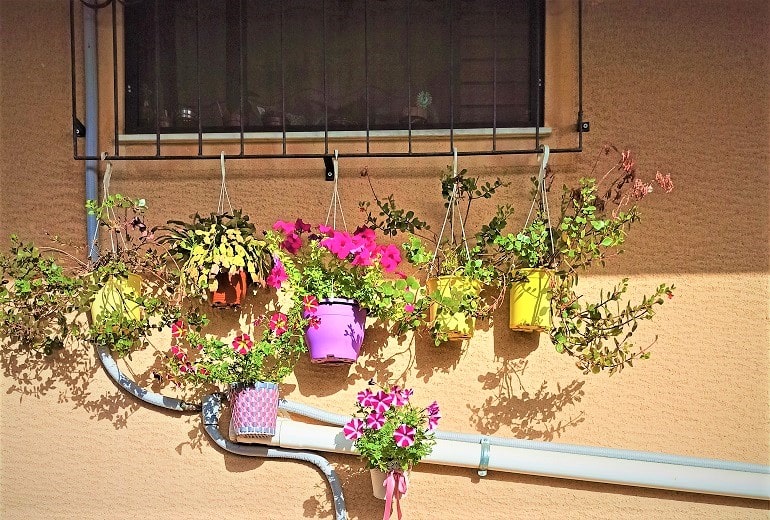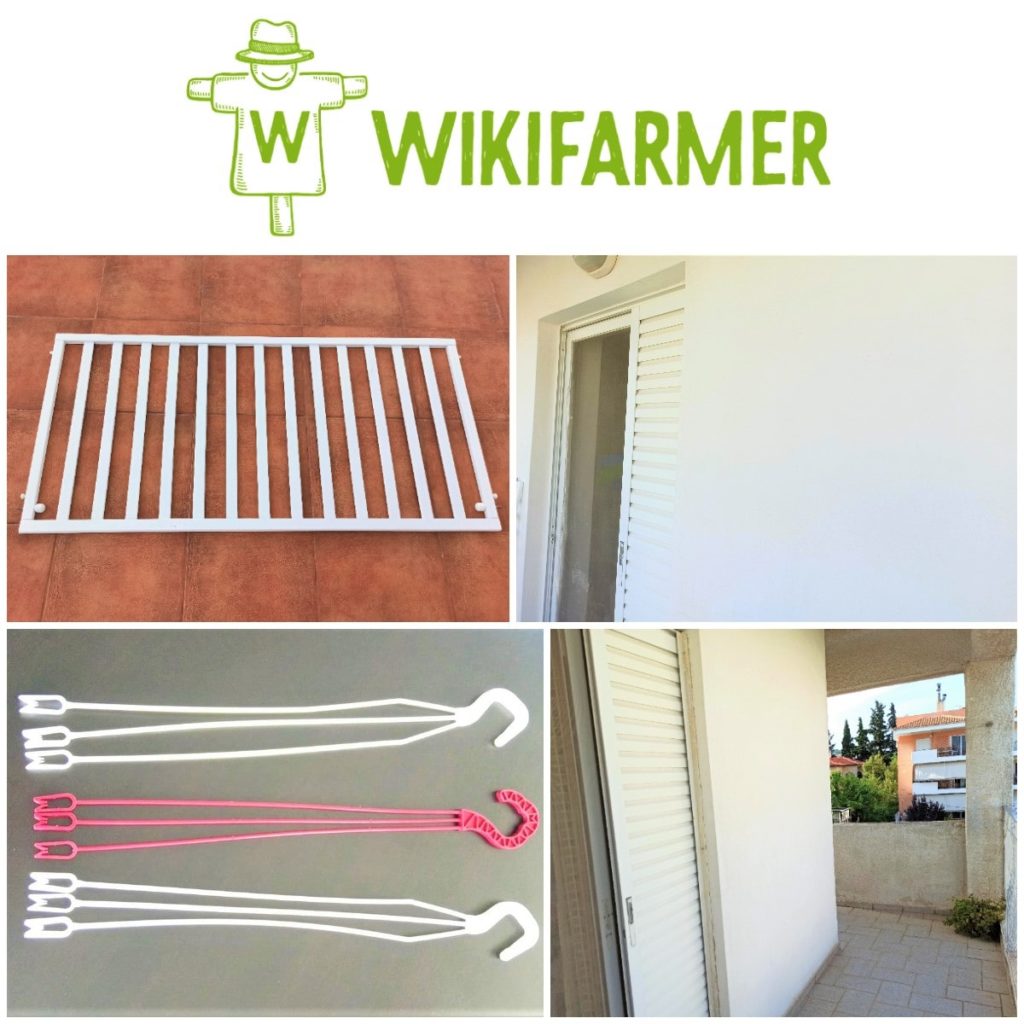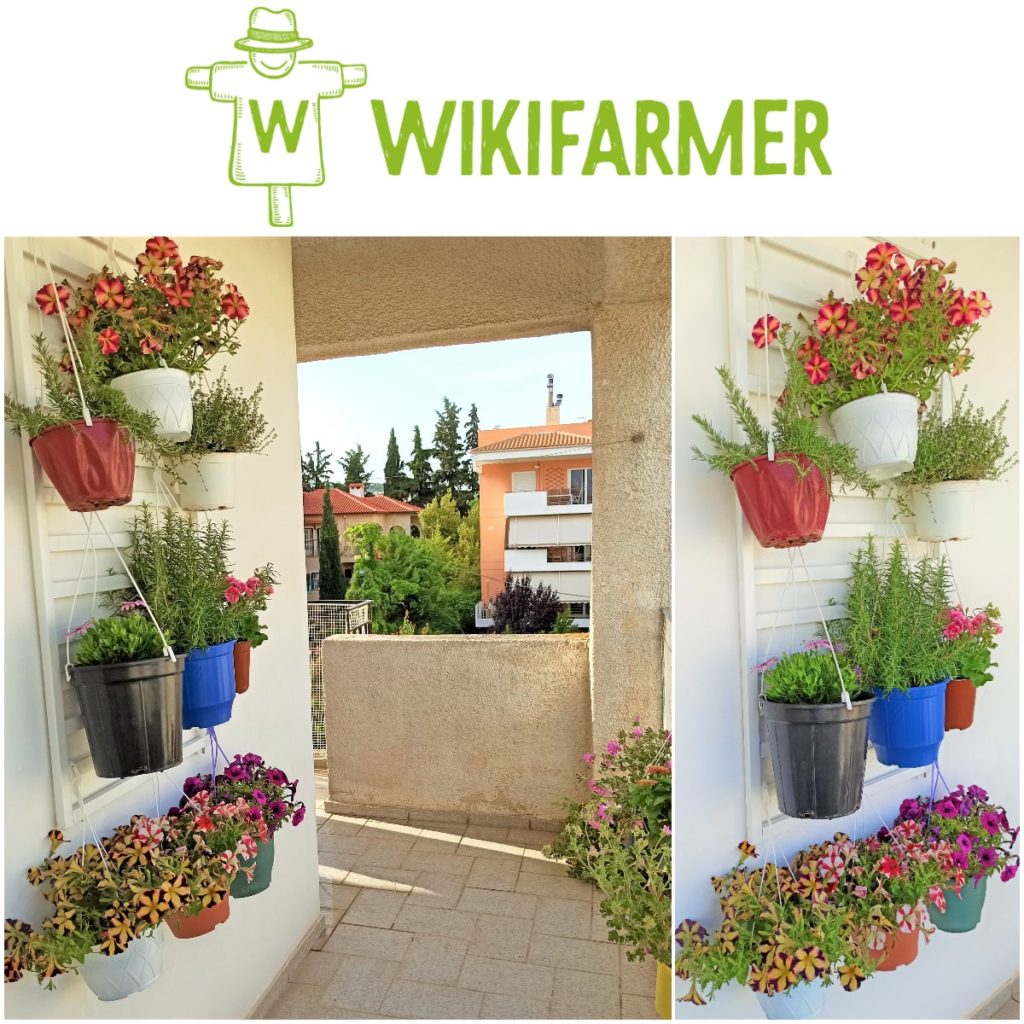Hanging flower baskets

This post is also available in:
This post is also available in:
![]() Español (Spanish)
Español (Spanish) ![]() Français (French)
Français (French) ![]() Deutsch (German)
Deutsch (German) ![]() Nederlands (Dutch)
Nederlands (Dutch) ![]() हिन्दी (Hindi)
हिन्दी (Hindi) ![]() العربية (Arabic)
العربية (Arabic) ![]() 简体中文 (Chinese (Simplified))
简体中文 (Chinese (Simplified)) ![]() Italiano (Italian)
Italiano (Italian) ![]() 한국어 (Korean)
한국어 (Korean) ![]() polski (Polish)
polski (Polish)
How to Easily Build Your Own Vertical and Hanging Garden for Free!
Many of our readers look for ideas to give color and life to their balconies, terraces, and outdoor corridors or passageways with, particularly limited space. The answer is, of course, none other than creating vertical-hanging gardens. These gardens have many advantages, as they do not need much space and take advantage of a wall, which would otherwise look monotonous and boring. Vertical gardens extend at the height of 140-190 cm (4.5- 6.2 feet), and that means they are at eye level and catch a person’s attention much more than even the most impressive flowerpot placed on the ground. Even the minimum effort that you will devote to creating a vertical garden will reward you. We will present you with an idea for creating a hanging garden on a balcony, which does not cost more than buying plants, about 38 euros (44 dollars), and will really transform a monotonous and grey balcony.
Step 1: Select a Location.
It is necessary to choose a place on your balcony/ terrace that faces the sun for at least 6 hours a day, as otherwise, your plants will produce poor quality flowers. Furthermore, the spot you choose must be protected from strong wind blows.
Step 2: Select Means of Support.
There are hundreds of ways to hang pots on a wall. However, we did not choose permanent wall mounting, e.g., with screws, as this creates some problems. First of all, if the pots are screwed, we cannot move them indoors when frost “hits”, and it is not so easy to replace a pot when a plant withers, especially for annual plants. So we chose pots with hooks that we can hand them anywhere. Our goal is to place these pots on a baby cot base that we placed on the wall with four simple screws. That way, we can very quickly change the structure of our vertical garden, replace our annual plants with others, and move perennial plants indoors to withstand the low winter temperatures. Surely, most of us have a couple of materials in our homes that we do not need and could use as a support base for flower pots with hooks on a simple wall. So, let your imagination run wild.
 Step 3: Plant Selection
Step 3: Plant Selection
Many people mistakenly believe that we can only have flowering plants in a vertical hanging garden. Certainly, some annual plants that produce impressive flowers will have the lion’s share. Still, we can complete our collection with perennial flowering plants and aromatic plants, from which we can cut twigs for culinary use. For the center of the layout, we chose the undisputed queen of the hanging gardens: the hanging perennial petunia, also known as “surfinia”. From aromatic plants, we selected upright and creeping rosemary and thyme. We also added annual zinnias, dimorphothecas, and the perennial geranium. Finally, we filled the edges of our construction with arbaroriza (Pelargonium graveolens) and citronella (Pelargonium “Citrosum”), which are hanging plants and produce vivid fuchsia flowers.
Hanging perennial and Annual Petunias:
The Petunias illustrated in the photo are also widely known as surfinias. However, the name Surfinia is a registered trademark of a similar type of petunia bred by a specific company. Petunias belong to the Solanaceae family, including other plants familiar to the general public but are not ornamental, like tomatoes, potatoes, tobacco, and others. Petunias are very popular mainly due to their colorful trumpet-shaped flowers. Their foliage is a bit hairy. The plant prefers areas with sufficient access to sunlight to grow properly, which is why the is so widespread in all Mediterranean countries. Petunias bloom from spring to autumn, and their flowers are among the most easily recognizable flowers in the world. We mainly used hanging perennial petunias but also an annual petunia. Read more about petunias here.
Zinnia: Zinnia is one of the most colorful flowering plants you can have in your yard. They grow fast and are pretty easy to grow almost anywhere. Zinnia is an ideal plant for beginner gardeners, as they need minimum care. The botanical or scientific name of Zinnia is Zinnia sp. There are many different types of Zinnia, the most common of all being Zinnia Elegans. Most species are native to North America and some to Central America. Read more about Zinia here.
Rosemary: Rosemary (Rosmarinus officinalis) is one of the most famous aromatic plants of the Mediterranean. It is an evergreen shrub with an average height of 1.2 m (3.93 feet) and has white, purple, or blue flowers and fragrant, leathery leaves that look like pine needles. It is a member of the Lamiaceae family, which includes many other herbs like basil, lavender, and sage. Rosemary is a honey bee plant and strongly attracts bees. The leaves can be used as flavor enhancers in cooking, but they are mainly intended for distillation in professional crops due to the high content of essential oil. Read more about rosemary here.
Thyme: Thyme is a perennial shrub with an average height of 20 cm (0.66 feet) and an average productive life of 6 years. It belongs to the Lamiaceae family, like lavender, rosemary, and mint. The plant grows from spring to autumn and blooms during the summer. There are over 200 different species of thyme, with the common thyme (Thymus vulgaris) being the most popular and widespread. Thyme strongly attracts bees. The bees that visit it produce high-quality honey with a strong, unique taste, one of the leading types of honey, and can be marketed at high prices. Read more about thyme here.
Geranium: Geraniums are perennial plants that belong to the genus Geranium. The plant is considered one of the most versatile ornamentals and adds vivid color to pots, hanging gardens, and terraces during the summer season. Do not underestimate their durability over time as there are cases where geraniums have lived for 25 years or more. This is true only when they receive the attention and care they deserve. Read more about geraniums here.
Dimorphotheca: Dimorphotheca is often referred to as the colorful daisy or African daisy because it belongs to the same family as the daisy (Asteraceae) and originates from South Africa. It is truly an impressive plant that produces bright flowers in all colors. Most species of Dimorphotheca are perennials, but in most cases, the plant cannot produce good quality flowers after the fourth or fifth year of its life. Read more about Dimorphotheca here.
Arbaroriza: The well-known Arbaroriza is a perennial plant classified to the same family as the Gerania (Geraniaceae). The plant is cultivated professionally for its essential oil, but we can also use it as a natural sweetener in sauces. In addition to the colors and aromas that it will offer, you can also add its leaves in jams, pastries and use them to make tea. It needs less watering than your petunias. All plants shown in the photos cost less than 40 euros (45 dollars) in most nurseries. Carefully place the pots with the hooks in the appropriate places, leaving distances between them, as proper airflow is essential for plants’ health. At this point, we need to emphasize the need for proper watering and fertilization, as several beautiful hanging pots may dry out due to a lack of water. In hanging gardens exposed to wind and sunlight, soil dries out much faster than in a pot on the ground. Subsequently, keep in mind to adequately wet the root and not the green parts of the plant.
 Watering and Fertilization
Watering and Fertilization
Most of the plants we have chosen for this arrangement need watering at least every other day until a bit of water runs from the bottom of the pot, especially during summer. Also, it is true that all plants that produce impressive flowers need the addition of a water-soluble fertilizer (e.g., 7-7-7) at least once in the spring and once during the summer. An exception here is our perennial hanging petunia. Petunia needs water-soluble fertilizer at least once every two weeks to produce impressive and dense flowers.
Pruning and Deadheading
The more we prune, the more our plants will grow since the purpose of any plant is to produce seeds and reproduce. Like all plants, petunias, dimorphothecas, zinnias, and geraniums are genetically programmed to produce seeds at a certain stage of their biological cycle. However, if we allow the flowers to produce seeds, the plants will devote all their energy to the seed production process and thus will stop blooming. Therefore, if we want to extend the flowering period of plants, we must remove any part of the plant that contains immature seeds. This process is called deadheading, and most gardeners perform these two procedures (pinching και deadheading) together. Marjoram, thyme, and rosemary also need regular deadheading, pruning, and cleaning of withered, diseased, or dry shoots. The pruning shears we will use during deadheading should be high quality and certified. For your perennials (hanging petunia, marjoram, rosemary, dimorphothecas, thyme, and geranium), during the first cold weeks of autumn, we remove the dry flowers, reduce the size of vegetation of the plant and let them overwinter. When we expect to have freezing temperatures, we should place the pots in a protected place so they do not suffer from sub-zero temperatures for many hours.
One last tip:
Suppose you suddenly see your plants wither and die after changing the pot’s position or transplanting it into a larger pot. In that case, it is not worth worrying about or spending time and energy regenerating it. And that’s because you probably won’t succeed. Plants growing in pots have a specific lifespan, and many factors are threatening their robustness and vitality. When a plant starts senescence, it’s probably time to buy new plants, which will give you more tender and fragrant shoots and flowers for longer.








































































